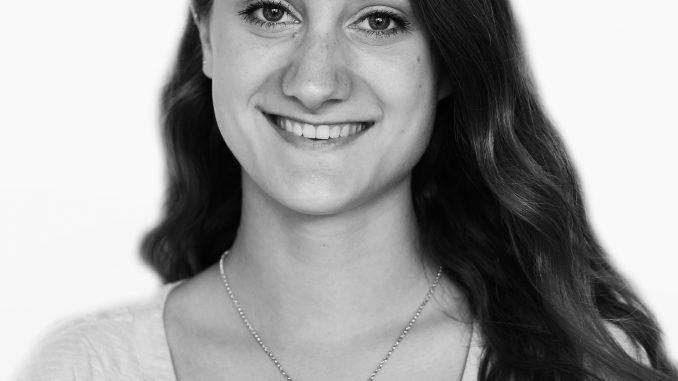
 I tapped my pen between my ring finger and the corner of my desk, wondering if the answers to an especially difficult political science test would come to me any time soon, or if I should just admit defeat and hand it in with about a quarter of the answers missing.
I tapped my pen between my ring finger and the corner of my desk, wondering if the answers to an especially difficult political science test would come to me any time soon, or if I should just admit defeat and hand it in with about a quarter of the answers missing.
I sighed and refocused, looking back down at the question that was giving me trouble.
“Scholars have found that voters tend to hold a governor accountable for the state’s economy only if:”
I realized it had to be option B, “if his party controls the legislature.”
As I circled the answer, I was given pause. “If his party controls the legislature”? His party?
Of course, women are perfectly eligible to be elected governor in this country. Men are not the only people who hold executive leadership positions within their states. According to my political science textbook, since 1974, 26 women have been elected governor in the United States. Why, then, would my professor use such an exclusive gender pronoun when referring to such a broad executive leadership position?
I scanned the rest of the exam, and she didn’t seem to refer to the governor exclusively as male in any other question. It must have been an accident, but I was still disappointed.
Statistically, my professor’s use of the male pronoun wasn’t that far off. In 2009, only eight women served as governor. In 2013, that number dropped to five. So that year, 10 percent of governors were women, while they made up about 51 percent of the country’s population. A woman has never been the president of the United States, and as of May 2015, only 12 of the Fortune 500 companies were lead by female CEOs.
But that’s exactly the problem—her generalization is common. It’s not unusual for our internal prejudices, perhaps even those that we’re not aware of, to accidentally come out. And it doesn’t just happen with gender pronouns. It happens across other platforms of prejudice, like inequality based on race, sexuality and socioeconomic status.
In my sociology class, I learned about a study conducted by researchers Marianne Bertrand and Sendhil Mullainathan in 2004. This study revealed when employers received resumes with identical qualifications, they were 50 percent more likely to hire a person with a “white-sounding name” over a person with a “black-sounding name.”
Oftentimes, we don’t even notice that we look at certain groups in very specific, harmful ways. I, too, am guilty of subconsciously clinging to prejudices I know are untrue and unfair.
When I decided on Temple during the spring of my senior year of high school, I started hearing warnings from everyone. My mother told me never to dangle my wallet around my wrist. My sister, a Philly native, told me to be careful off Main Campus, and especially while walking down Cecil B. Moore Avenue.
By move-in day, I was nervous. My family had me sufficiently worried about the community surrounding Temple. When I walked around off campus, especially late at night, I found myself clutching my wallet when I saw anyone who looked like a community resident, rather than a student.
It took me a few weeks to realize I was only worried about my possessions when black people walked past me.
This is an example of my own social prejudices, and it’s a manifestation of systemic racism in my thought processes and actions. Though it’s not necessarily my fault society encouraged me to internalize that stereotype, it is certainly my responsibility to correct it.
According to the same lesson by my sociology professor, the best way to continue to fuel inequality is to pretend it doesn’t exist. For example, he said people often claim we live in a “color-blind, post-racist society.” Not only does this hinder our progress in achieving equality, it also breeds a new kind of racism, one that denies oppressed groups access to resources because the privileged groups think they should just pull themselves up by their bootstraps and succeed without help.
To really solve social inequality, we have to admit our own prejudices to ourselves. We must constantly be on the lookout for these warped perceptions. When I was honest with myself about the racial biases had internalized, it became far easier for me to begin to move past them.
Now more than ever, it’s important that we think clearly and logically about the stereotypes we’ve been socialized to believe. We’ve got to start untying the knots of these complex prejudices—those that empower the privileged and oppress others—from the inside out.
Michaela Winberg can be reached at michaela.winberg@temple.edu.



Be the first to comment